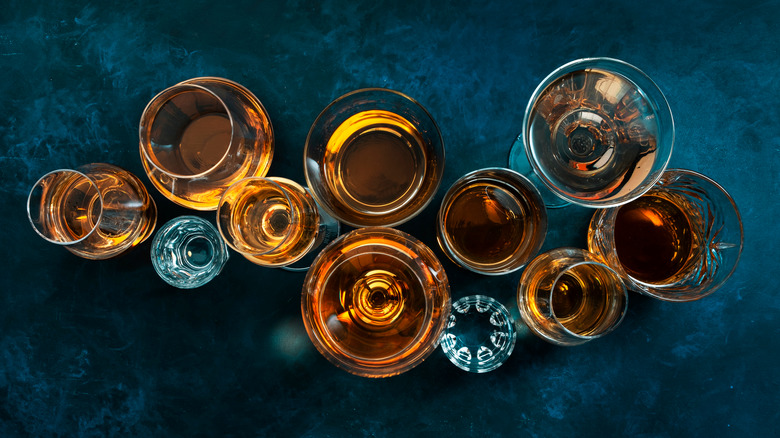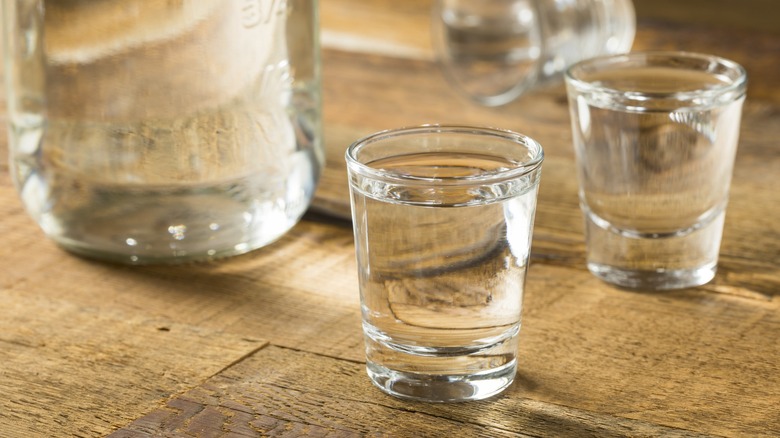Moonshine And Bourbon Have A Lot More In Common Than You Think
As a uniquely American spirit (and one enshrined in a Senate resolution, no less), there are very specific rules and legal requirements about what makes a spirit a bourbon. All types of bourbon must be made in the United States, contain at least 51% corn in their mash bill (the mix of the grain, yeast, and water that is fermented to make the alcohol), have no color or flavor additives other than water, and be aged in new charred oak casks for a minimum of two years (for straight bourbon). Moonshine, on the other hand, by definition doesn't have any legal requirements, since it refers to illegally made alcohol.
The term was first applied to illegal liquor in the late 1700s in England, but became closely associated with the Prohibition in the U.S. It's defined by Britannica as an "unaged whiskey that was made at home with a corn (maize) base and a high alcohol content." When made from a base of corn (as it often is), moonshine is effectively a precursor to bourbon; it's the clear, high proof spirit that never gets aged in a charred oak barrel, a crucial step for it to be considered a bourbon (and the step that sees bourbon take on a golden hue and its distinctive and rich flavors).
Moonshine is free from strict regulations
If you look at the fermentation and distillation steps for making moonshine and bourbon, you'll find that they are incredibly similar. There's a reason that moonshine is considered unaged whiskey. Also referred to as white dog, white whiskey, or white dog whiskey, it's not considered a true bourbon, as it's not aged at all — never mind in a new charred oak barrel. These days, however, many big name bourbon distillers, including Buffalo Trace and George Dickel, offer white whiskeys (essentially moonshine) that are worth trying. (Of course, as many have pointed out, these options are produced legally by distillers, which means they aren't true moonshine.)
There are also additional differences between moonshine and bourbon. While bourbon can't have any additives other than water, moonshine often incorporates fruit, botanicals, or other flavors to enhance its flavor and make the raw, unaged, and often harsh spirit more palatable. Moonshine, while often made from corn, is sometimes made from other grains, fruit, or even sugar. Moonshine also doesn't have the same proof limitations — distilled to no more than 160 proof — that bourbon has and often comes out at a higher proof. That said, moonshine and bourbon still have an awful lot in common.

